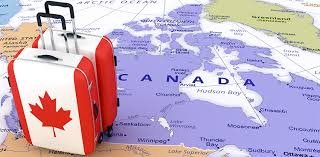Navigating Canada Immigration: A Comprehensive Guide
Canada, known for its diverse culture, high quality of life, and robust economy, is a popular destination for immigrants seeking new opportunities. With its welcoming immigration policies and numerous pathways, Canada offers various options for those looking to relocate. This article provides a comprehensive guide to Canada immigration, covering key pathways, processes, and tips for a successful application.
1. Overview of Canada’s Immigration System
Canada’s immigration system is designed to attract skilled workers, entrepreneurs, students, and refugees from around the world. The system is managed by Immigration, Refugees, and Citizenship Canada (IRCC) and includes several programs and categories, each with specific eligibility criteria and application processes.
2. Main Immigration Pathways
Canada offers several pathways for immigrants, each catering to different needs and qualifications:
- Express Entry: The Express Entry system is a popular immigration pathway for skilled workers. It manages applications for three main federal programs: the Federal Skilled Worker Program, the Federal Skilled Trades Program, and the Canadian Experience Class. Applicants are assessed based on factors such as age, education, work experience, and language proficiency. High-ranking candidates in the Comprehensive Ranking System (CRS) receive Invitations to Apply (ITAs) for permanent residency.
- Provincial Nominee Program (PNP): Each Canadian province and territory operates its own Provincial Nominee Program, allowing them to nominate individuals who meet local labor market needs. PNPs often target skilled workers, business owners, and international graduates. A provincial nomination can significantly increase an applicant’s chances of receiving permanent residency through Express Entry.
- Family Sponsorship: Canadian citizens and permanent residents can sponsor their close family members, including spouses, children, and parents, for immigration to Canada. The sponsorship process involves proving the relationship and demonstrating the ability to support the sponsored family member financially.
- Student Visas: International students who wish to study in Canada can apply for a study permit. Studying in Canada can also be a pathway to permanent residency through programs like the Post-Graduation Work Permit (PGWP), which allows graduates to work in Canada and gain valuable Canadian work experience.
- Business and Investment Immigration: Canada offers pathways for entrepreneurs and investors through programs like the Start-up Visa Program and the Self-Employed Persons Program. These programs are designed for individuals who can contribute to Canada’s economy by starting or investing in a business.
- Refugee and Asylum Seeker Programs: Canada is committed to providing protection to individuals fleeing persecution and violence. Refugees and asylum seekers can apply for protection under Canada’s refugee programs, which include both government-assisted and privately sponsored options.
3. The Application Process
The application process for Canada immigration varies depending on the pathway chosen. However, there are some common steps involved:
- Determine Eligibility: The first step is to determine eligibility for the chosen immigration pathway. Each program has specific criteria, so it’s essential to review these requirements thoroughly.
- Gather Documentation: Applicants must gather and submit various documents, such as identification, educational credentials, work experience records, and language test results. Accurate and complete documentation is crucial for a successful application.
- Submit an Application: Applications are typically submitted online through the IRCC website or through specific provincial programs. Some pathways, like Express Entry, involve creating an online profile and entering the pool of candidates.
- Attend an Interview (if required): Some immigration pathways may require an interview or additional assessments. Applicants should be prepared to attend these interviews and provide further information as needed.
- Receive a Decision: After submission, applications are reviewed by immigration officials, and a decision is made based on the provided information and criteria. Applicants may receive an approval, request for additional information, or a rejection.
- Complete Medical and Security Checks: Successful applicants are required to complete medical examinations and security background checks to ensure they meet Canada’s health and safety standards.
4. Tips for a Successful Application
To enhance your chances of a successful Canada immigration application, consider the following tips:
- Research Thoroughly: Understand the requirements and processes for the specific immigration pathway you are applying for. Each program has unique criteria and procedures.
- Prepare Documents Carefully: Ensure all documents are accurate, complete, and up-to-date. Any discrepancies or missing information can delay the process or lead to rejection.
- Improve Language Skills: Strong language skills in English or French can significantly boost your application, especially for programs like Express Entry. Consider taking language tests and improving your proficiency.
- Seek Professional Advice: If you find the immigration process complex or challenging, consider consulting with an immigration consultant or lawyer who can provide expert guidance and assistance.
Summery
Canada’s immigration system offers numerous pathways for individuals seeking to make a new home in the country. By understanding the various programs, preparing a thorough application, and following the necessary steps, you can increase your chances of successfully navigating the Canada immigration process. Whether you are a skilled worker, student, entrepreneur, or family member, Canada provides opportunities for a diverse range of immigrants to contribute to its vibrant and thriving society




